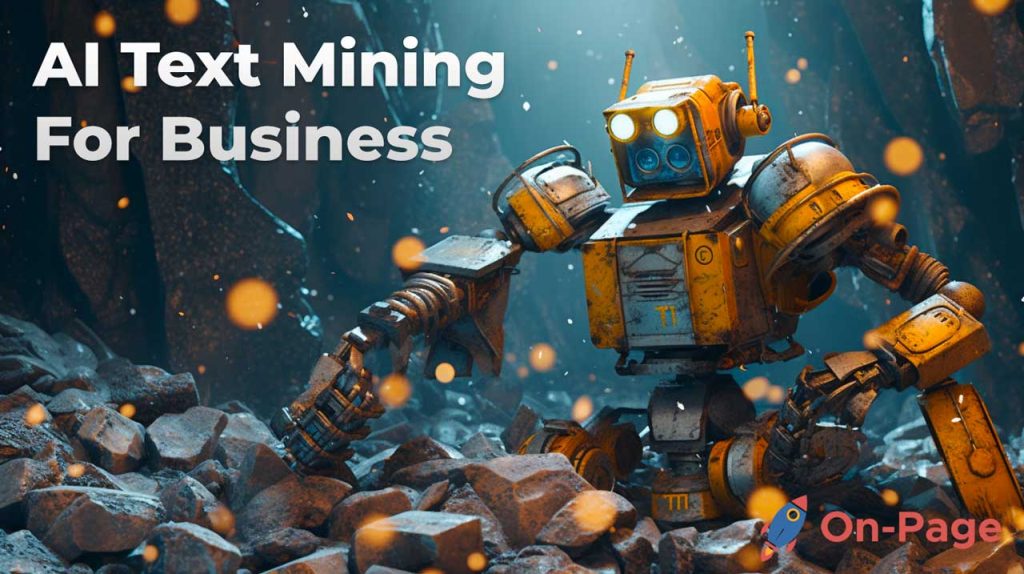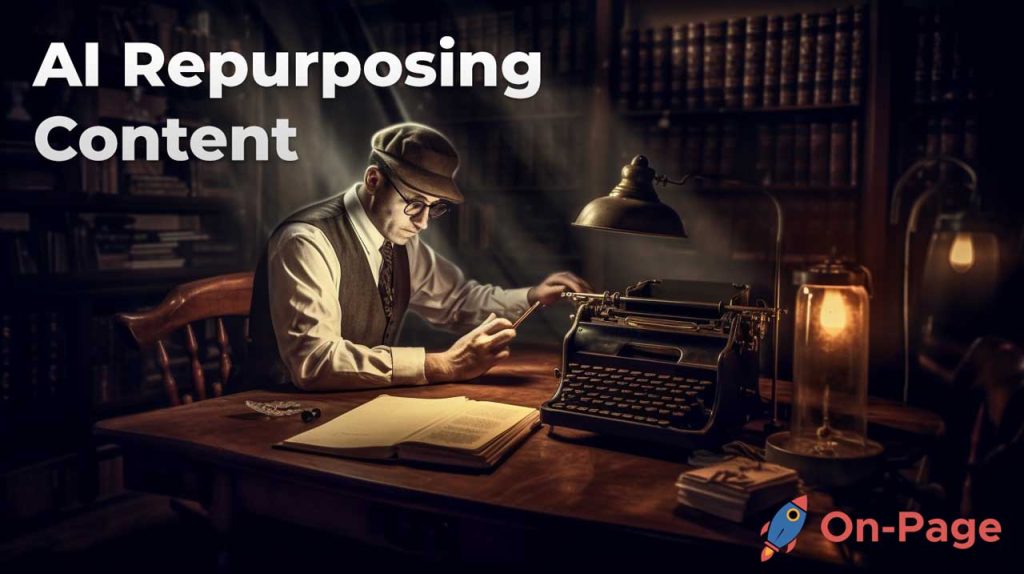
Picture this: you’re an author struggling to find the perfect words for your captivating scene, or a content creator with writer’s block, staring relentlessly at the blank screen. Fear not! This is where Artificial Intelligence (AI) swoops in like a literary superhero. Welcome to the future of writing, where machine learning unlocks creative dimensions previously unimaginable. Say goodbye to stale sentences and monotonous phrasing; it’s time to revolutionize your writing process with AI, harnessing its power to elevate your work from ordinary to extraordinary. Curious about how AI can change the game for you? Keep reading to unveil the secrets and step into a world of cutting-edge innovation that’ll have you producing jaw-dropping content every time.
Machine learning can be used in creative writing to aid the writer with tasks like generating sentences that contain desired words, producing myth-focused sentences for analysis against those written by human authors, and providing ideas to help overcome writer’s block. By utilizing these capabilities of machine learning, writers can streamline their process and produce more imaginative and expressive content.
Machine Learning in Writing Tools
Machine learning has entered many aspects of our daily lives, and writing is no exception. Writing tools powered by machine learning such as On-Page.ai are becoming increasingly popular because of their ability to assist writers in producing better quality content more efficiently. Machine learning helps writing tools understand the nuances of text and language, which is essential for improving the quality of content produced.
One way machine learning can be useful in writing tools is through on-page search engine optimization (SEO) recommendations. For example, On-Page.ai crawls websites just like Google does to identify the main content, headers, footers, sidebars, and advertisements. This information provides accurate recommendations that suggest how best to improve a website’s ranking. The tool helps optimize titles, headlines, body text, and images by providing relevant suggestions that help increase each page’s relevance, which improves web rankings.
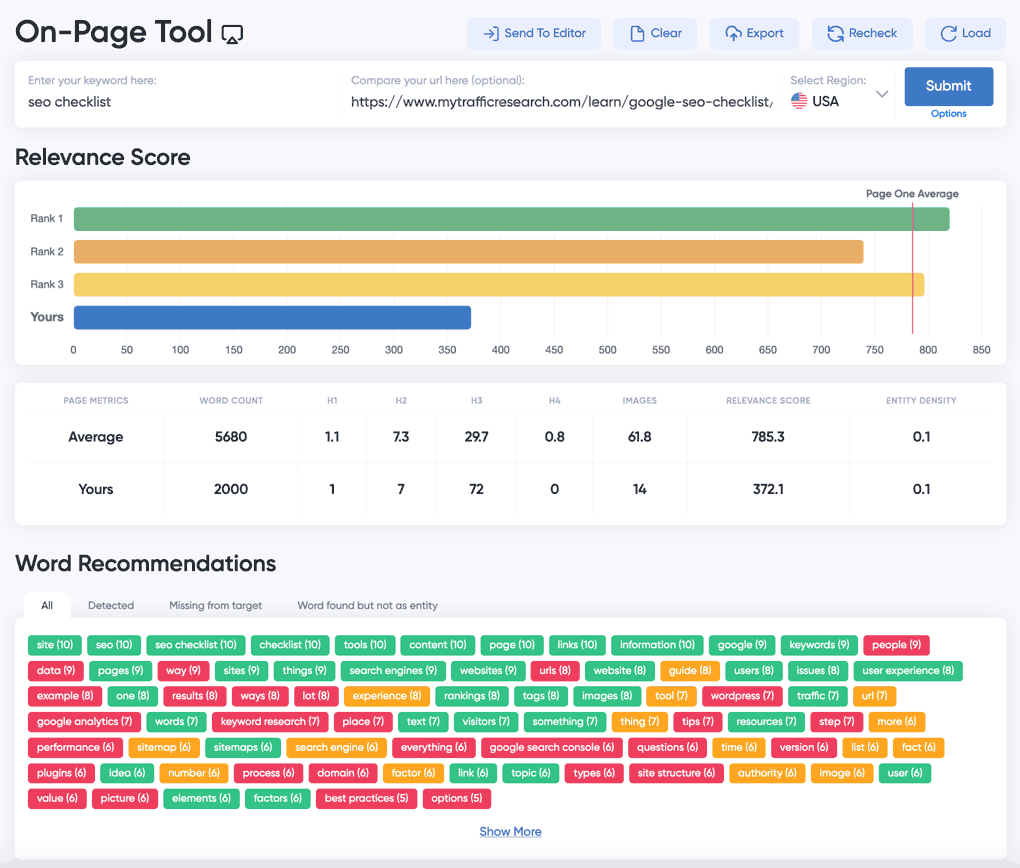
One way machine learning has helped writing tools is through topic modeling. This process involves automatically identifying topics in a large body of text using machine learning techniques like Latent Dirichlet Allocation (LDA). Topic modeling can uncover themes within the content and discover latent patterns that might have been hidden otherwise. For example, we’ve seen the tool recognize that posts about “how to use social media” also contain underlying themes about digital marketing.
Another way machine learning is helpful to writing tools is through grammar-checking software like Grammarly, which has come a long way since its inception several decades ago. Earlier versions were limited to spotting typos and obvious grammatical errors. Modern grammar checkers powered by machine learning algorithms can now identify complex issues such as style inconsistencies and awkward phrasing in addition to basic spelling and syntax mistakes.
To better explain how grammar-checking software has improved due to machine learning, think about it as a self-driving car on a highway – it’s constantly being fed data from various sources, and over time it gets better at recognizing patterns in that data. Similarly, grammar-checking algorithms rely on datasets of written language to learn how sentences should be structured, what words go together best, and how to identify the types of errors people make most often.
Having said that, machine learning isn’t limited to just catching grammatical mistakes – it can also help generate content from scratch.
Smart Compose and Text Prediction
Smart Compose is a feature offered by Google that suggests endings to sentences as users type them, effectively automating the process of completing thoughts. The technology behind Smart Compose is machine learning – specifically deep learning – which makes billions of probability calculations based on patterns in years’ worth of emails sent from Gmail.com. According to Google, Smart Compose saves users two billion keystrokes per week and is already used by roughly a fifth of the human population.

Smart Compose goes beyond just correcting words into coming up with words for the user. The algorithm’s impressive accuracy comes from its ability to recognize different contexts and predict what word or phrase would most likely come next given what has already been written.
However, some critics are skeptical about text prediction algorithms such as Smart Compose because they raise questions about the role of human thought and the potential for machines to think for us. Some might argue that writing is a personal expression of original thought, and although machines are becoming increasingly proficient at predicting those thoughts, writers who rely too heavily on them may risk losing their own creativity.
On the other hand, assisted content generation tools like On-Page.ai’s Stealth Writer can be incredibly useful when you need to produce a significant amount of content quickly while still maintaining quality. Whether you’re working on an article for your blog or putting together product descriptions for an e-commerce site – these tools use AI algorithms to automatically generate written content, inquiring about the desired tone and style before getting started.
Overall, Smart Compose and text prediction tools have tremendous potential to save writers time and effort, but they should be used with caution. Machine learning-powered writing tools like On-Page.ai’s Stealth Writer can be incredibly helpful for a wide variety of writing tasks. However, their accuracy and usefulness are only as good as the underlying datasets that they are trained on.
Assisted Content Generation
The process of content generation can be tedious and time-consuming for writers. Fortunately, with the advent of AI-powered writing tools, writers can now generate high-quality content in a fraction of the time it would have taken them before.
One tool that has gained popularity in recent years is On-Page.ai’s Stealth Writer. The Stealth Writer is an article creator that uses machine learning to generate articles based on a particular keyword or topic. With just one click, users can create numerous articles that are plagiarism-free and optimized for SEO.
For instance, let’s say you’re a content writer who was asked to write high-quality articles about “best SEO optimization tool.” Instead of spending hours researching and writing each article from scratch, you could simply input that keyword into On-Page.ai’s Stealth Writer. The tool will then generate multiple articles on that same topic, which you could then edit and customize as you see fit.
Apart from saving time, AI-powered tools like On-Page.ai’s Stealth Writer also help to maintain consistency in writing styles across multiple authors.
Think of these AI-powered writing tools as your personal assistants. They take over a lot of the manual tasks that would have otherwise consumed your precious time, leaving you with more time to focus on other crucial aspects of your work.
Furthermore, research has shown that there are significant benefits to using AI-powered writing tools such as increased productivity and higher quality output. For example:
- Companies using AI-driven content creation see their organic search traffic increase by an average of 150% over six months compared to companies still producing content manually.
- According to a report by Gartner, the use of AI-powered writing assistants like Grammarly increased productivity by at least 20% over traditional proofreading and editing techniques.
- In a study published in 2021, machine learning helped screenwriters identify patterns in successful movie scripts, which helped in predicting box-office success.
- A survey conducted by Statista in 2020 found that approximately 35% of businesses have adopted some form of machine learning technology to improve their content production and management processes.
Analyzing and Refining Writing with AI

Apart from assisting in content generation, AI-powered writing tools can also help writers analyze and refine their work. For example, On-Page.ai offers an on-page scanning tool that crawls sites like Google to identify the main content, headers, footers, sidebars, and advertisements to provide accurate recommendations on the most important words to add to your page for better rankings.
The On-Page.ai on-page scanning tool analyzes factors like readability, length, keyword density, and more to provide real-time feedback and suggestions on how to improve the content’s relevance and ranking potential. By using this tool, a writer can easily optimize their titles, headlines, and body text so that they are better aligned with SEO best practices.
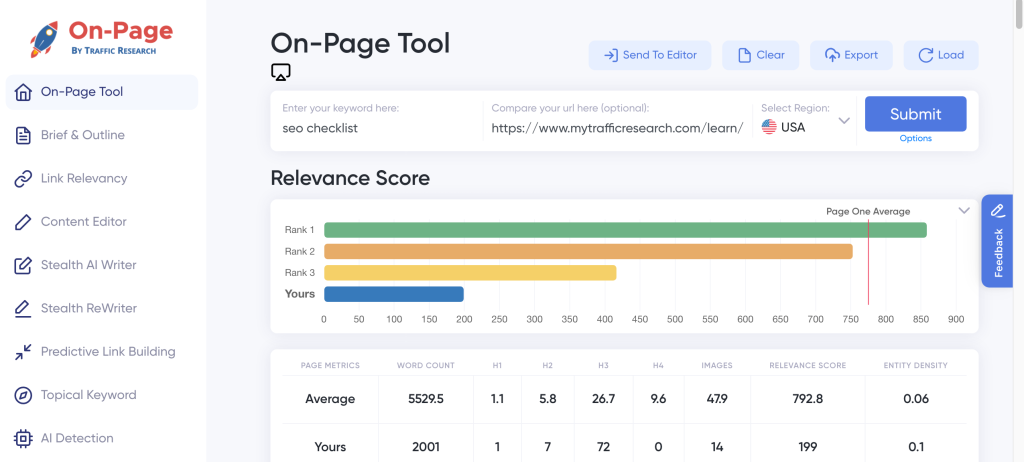
However, one could argue that relying too heavily on these AI-powered tools may take away from the creative process of writing. After all, writing is a personal expression of original thought. While these tools can certainly help make the process more efficient, there is always the risk that relying too much on them can lead to formulaic or robotic writing styles.
Nevertheless, if used as a tool rather than a replacement for human creativity and insight, AI-powered writing tools have the potential to significantly improve productivity while maintaining quality output. As technology continues to evolve at an incredible pace, it will be exciting to see how far these tools will go in influencing & shaping the world of professional writing.
Grammar and Style Improvement
One of the biggest challenges that writers face is ensuring that their writing is grammatically correct and stylistically consistent. That’s where AI comes in – machine learning algorithms can analyze large datasets to identify patterns of good writing, and then apply these patterns to improve the quality of people’s writing.
For example, On-Page.ai’s Stealth Rewriter feature uses machine learning to analyze text and suggest ways to improve it. It can identify and correct common grammatical errors, as well as suggest more appropriate synonyms for words that might not be the best fit for a given context. This can help writers polish their work and ensure that their message is delivered clearly and effectively.

What’s more, machine learning algorithms can also help with stylistic consistency. They can analyze a writer’s style (based on factors like sentence structure, word choice, and tone) and use this information to suggest changes that will make the text flow more naturally or better match the intended audience. This can be especially helpful for writers who are working on long documents or collaborating with other writers on a shared project.
Of course, some people might argue that relying too much on technology could lead to a loss of creativity or a “cookie-cutter” approach to writing. However, I believe that these concerns are misplaced – while it’s true that AI can automate some aspects of the writing process, ultimately it’s up to humans to make creative decisions about what they want to communicate and how they want to express themselves.
To put it another way, using machine learning algorithms in writing tools is similar to using a dictionary or thesaurus – it’s just another resource that writers can draw upon when crafting their message. Just as a writer might consult multiple sources when researching a topic or checking facts, they can also look to AI-powered writing tools to help them express their ideas more eloquently.
Now that we’ve explored how machine learning can help with grammar and style improvement, let’s move on to another area where AI is changing the game – the creative writing process.
AI and the Creative Writing Process

When people think of creativity, they often picture a lone writer poring over a blank page or struggling to come up with the perfect turn of phrase. However, as discussed earlier in this article, AI is increasingly being used to assist with various aspects of the creative process – including generating new ideas, helping writers overcome blocks, and even producing entire pieces of content from scratch.
One powerful example of this is On-Page.ai’s Stealth Writer feature. Using a combination of natural language processing (NLP) and machine learning algorithms, it’s able to churn out high-quality articles on any topic in just a matter of seconds. This can be incredibly helpful for content creators who are working on tight deadlines or need to produce a large volume of content quickly.
But AI can do more than just generate content – it can also help writers come up with new ideas and explore different directions for their work. By analyzing existing texts and identifying potential patterns or themes, machine learning algorithms can suggest ways to expand upon or reframe topics that a writer might not have considered otherwise.
Some people might argue that relying on AI to generate content is “cheating” or takes away from the authenticity of a piece. However, I would counter that argument by saying that any tool or resource that helps writers express themselves more effectively should be embraced. Ultimately, it’s up to each individual writer to decide how they want to create and share their work – but I believe that AI-powered writing tools can be incredibly valuable assets in that process.
To use an analogy: if traditional writing is like hiking up a mountain, AI-assisted writing is like taking a helicopter ride to the summit. It might not be as physically strenuous, but it can still offer breathtaking views and new perspectives on the landscape.
Overcoming Writer’s Block
One of the biggest challenges writers face is overcoming writer’s block. The feeling of being stuck, with no ideas or inspiration, can be overwhelming and frustrating. But with the emergence of AI-assisted writing tools, there are now ways to overcome writer’s block and get back to writing again.
Imagine you’re a content writer working on an article, but you’re stuck on the introduction. You’ve been staring at a blank page for hours, and nothing seems to come to mind. This is where AI-assisted writing tools can come in handy. By inputting your topic into a tool like On-Page.ai’s Stealth Writer, the AI algorithm will generate an article for you based on the best practices of your niche. The generated text can be used as a foundation for your own writing or can spark new ideas that help you with your own unique formulations.
In another example, let’s say you’re working on a novel and are struggling with character development. An AI-powered creative writing tool like GPT-3 can help by offering suggestions and insights based on previous literary works that have achieved success. By analyzing elements such as plot structure, character traits, dialogue tone, and others, these tools can provide valuable feedback to inspire creativity while helping writers improve their skills through machine learning algorithms.
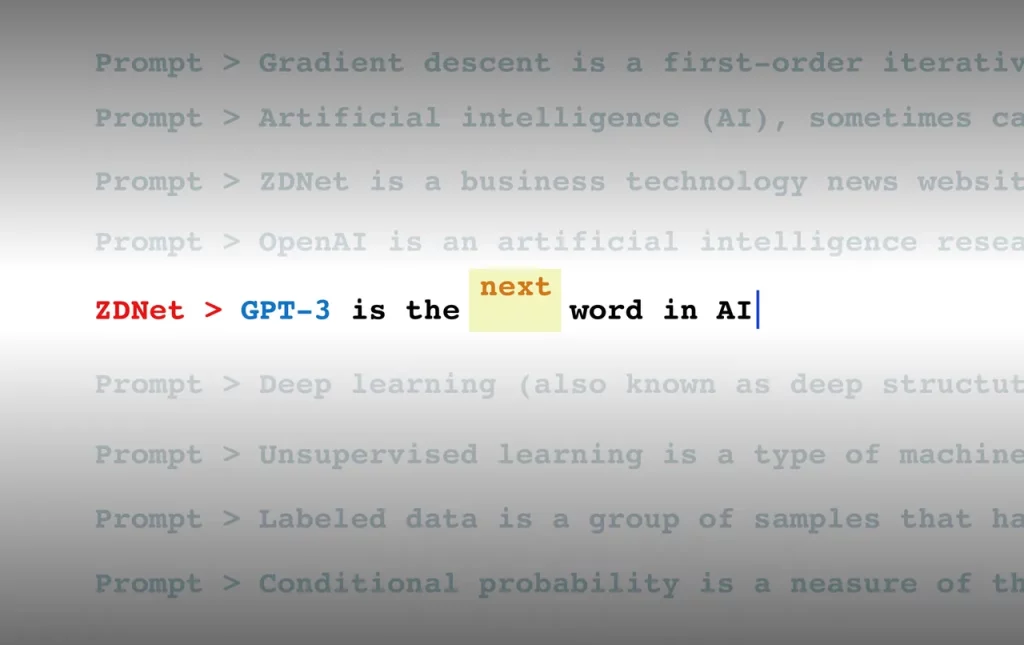
However, some may argue that relying too much on technology may inhibit creativity and reduce originality. While this is an understandable concern, it is important to remember that AI-assisted writing tools are meant to aid in the creative process rather than replace it altogether. The suggestions and insights offered by these tools should be seen as points of reference or inspiration that can be further developed by human thought.
Ethical Considerations in AI-Assisted Writing

While the use of AI in writing has proven to be beneficial in many ways, there are also ethical considerations that must be taken into account. One such concern is the potential for misuse or abuse of AI-generated content, leading to issues such as plagiarism, copyright infringement, and fake news.
To illustrate this point, think of an article written by a journalist but edited by an AI program. The article is then published under the name of the journalist without disclosing that AI was involved in the writing process. This raises the question of who should take responsibility for any errors or ethical violations that may be present in the article – the journalist or the AI program?
Another ethical issue is the potential bias in machine learning algorithms. If these algorithms are trained on data that has an inherent bias, they will perpetuate that bias in their outputs. For example, if an algorithm is trained on data that contains gender biases, it may produce outputs that reflect those biases.
However, some argue that technology is simply a tool and it’s up to users to ensure they use it ethically. Therefore, guidelines and regulations should be put in place to prevent abuse and promote the ethical use of AI-assisted writing tools like On-Page.ai and its Stealth AI Writer tool. This includes ensuring transparency and disclosure around the use of AI in writing to enhance user trust and credibility.
Frequently Asked Questions and Responses
How does machine learning improve productivity for writers?
Machine learning has unlocked immense productivity potential for writers. With natural language processing algorithms, AI-powered writing tools can now automate tedious writing tasks such as grammar and spelling checks, rewriting suggestions, and even content generation.
According to a recent study by Gartner, automation technologies like machine learning can improve workplace productivity by up to 40%. This is because AI writing tools can perform these tasks in seconds or minutes, compared to the hours it would take human writers to complete them manually. This leaves writers more time to focus on creating high-quality content that resonates with their audience.
Another way that machine learning improves productivity for writers is through personalized suggestions. Powerful algorithms can analyze vast amounts of data about a writer’s style and tone, and provide suggestions that align with their preference. This dramatically reduces the time lost in endless content edits.
Finally, machine learning improves collaboration between writers through real-time collaboration platforms such as Google Docs. These platforms enable multiple writers to work on the same document from remote locations simultaneously, reducing communication lags and speeding up production times.
In conclusion, machine learning offers endless potential for improving writer productivity by streamlining tedious tasks, providing personalized suggestions, and enabling seamless collaboration among team members. As AI tech continues to advance, we can expect this trend to grow substantially over time.
How accurate is machine learning when it comes to generating written content?
Machine learning has revolutionized the way we approach writing, and its impact on content generation is equally compelling. However, it’s important to remember that while AI tools have come a long way in recent years, they are far from perfect.
According to a study conducted by OpenAI, an AI language model called GPT-3 generated impressively coherent written passages. Its ability to mimic human writing style was remarkable. However, significant errors were present in some cases.
In other research by LinkedIn, people actually preferred reading articles generated by humans compared to those created by bots. This suggests that there is still a long way to go before machines can completely replicate the creative process of humans without error. Additionally, machine-generated content often lacks emotional intelligence and creativity.
That being said, these AI tools can still be useful as writing assistants or for generating basic content for certain purposes. In fact, they can save a considerable amount of time and effort for writers when used correctly.
As this technology continues to grow and improve, it will be interesting to see how it impacts the future of writing and journalism. While we may not have reached complete accuracy with machine learning yet, we are certainly closer than ever before.
Are there any risks or concerns related to using machine learning in the writing process?
While the application of machine learning in writing processes has been a revolutionary development, it is important to acknowledge that there are also risks and concerns associated with this technology.
One of the foremost concerns of using machine learning in writing is the potential for bias. As data sets drive machine learning models’ creation, they can unintentionally reflect or amplify societal biases already existing in our culture. Such biases will inevitably result in discriminatory language choices and enforce stereotypes that can lead to negative outcomes.
Another risk is the question of who controls the algorithms driving artificial intelligence. There’s no regulation framework, leaving room for unfair profiling of individuals based on personal information harvested without their knowledge or consent; furthermore, cyber attacks or data breaches could leave their impact even more severe.
Lastly, many raises ethical issues related to plagiarism involving machine-generated content where machine learning-based tools can generate sentences paraphrasing chunks of unoriginal text, potentially breaching intellectual property laws.
However, while these concerns are valid, the potential benefits of machine learning in writing cannot be ignored. ML-powered applications can write articles with unmatched speed and accuracy while inherently helping increase transparency and efficiency for writers across the board.
As we move forward into a future characterized increasingly by AI and automation-driven technology, individuals must maintain ethical conduct when developing and implementing AI technologies while creating frameworks that address risks associated with AI-enabled technologies.
What specific tasks within the writing process can be automated with machine learning?
Machine learning has the potential to automate a wide range of tasks in the writing process, from generating ideas to editing and proofreading. Here are some specific examples:
- Content generation: Machine learning can help writers generate content by analyzing data on customer behavior, market trends, and other relevant factors. This technology can then offer suggestions for topics, titles, and even full articles that align with the writer’s goals and audience preferences. This can help boost productivity by up to 20% while maintaining quality.
- Language optimization: Machine learning techniques can be used to optimize language usage for clarity and tone, eliminating errors caused by typos or poor grammar. According to a study, machines can check grammar more accurately than human proofreaders.
- Content classification: Machine learning algorithms can be used to analyze large amounts of text to determine what topics or themes it covers. This can help writers find previously unexplored angles on given subjects, perform competitor analysis and discover gaps in their current content strategy.
- SEO optimization: By analyzing web data on search queries that users engage in order to reach each piece of content produced, machine learning also helps optimize our content for search engines’ web crawlers so it becomes easier to find on the internet without wasting resources on ineffective keywords.
Overall, machine learning has enormous potential when it comes to helping writers produce higher-quality content at faster rates than ever before. By automating repetitive tasks like grammar checking or researching topics along with harnessing technologies for optimized language structure and SEO, writers have a greater capacity to focus on creativity and bring new insights into their texts rather than being occupied merely with mundane routine tasks.
Can machine learning analyze and improve the quality of writing beyond just grammar and spelling errors?
Yes, machine learning can analyze and improve the quality of writing beyond just grammar and spelling errors. While it is true that machines are great at identifying misspelled words and misplaced commas, they can also help writers improve their overall writing style, tone, and flow.
One way machine learning does this is through natural language processing or NLP, a branch of machine learning that focuses on how machines can understand and process human language. NLP algorithms analyze text for structure, word choice, and context to identify patterns and extract meaning. With this information, they can provide suggestions for improving sentence structure, vocabulary, and tone.
Furthermore, machine learning can assist in content optimization for factors such as SEO or readability scores. By analyzing language patterns that are known to impact metrics like reader engagement time or search engine ranks, an AI-enhanced writing tool can suggest revisions that improve these metrics far more than basic word-processing applications ever could.
In conclusion, while AI-powered writing tools like On-Page.ai are still developing rapidly within the writing industry, existing technology has already shown vast improvements beyond mere grammar checks. As more authors adapt to use these tools in producing their written work, long-term research into effectiveness will become clearer.

